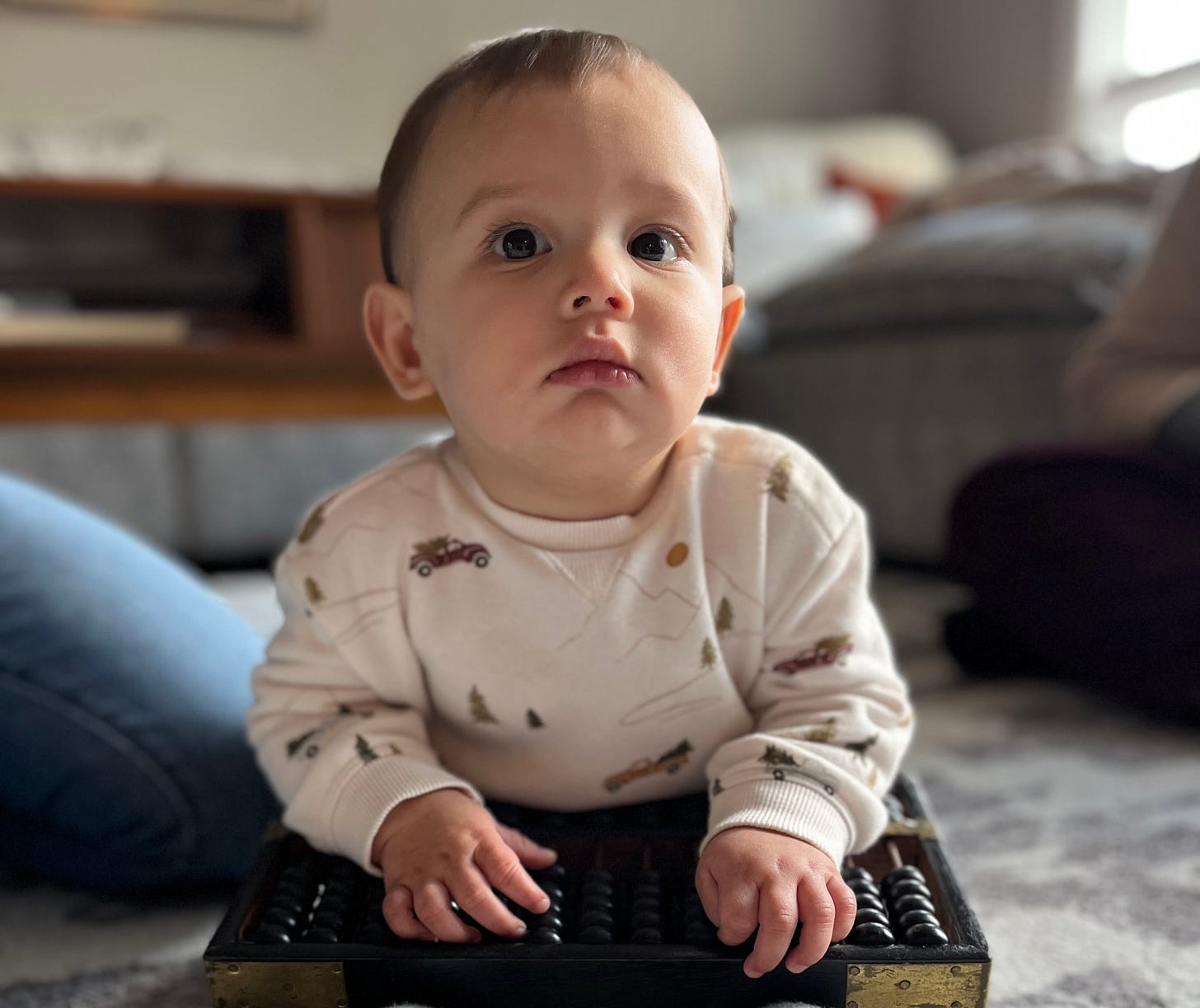Ah, nuts
The prickly world of childhood allergies
Growing up, I was not very aware of food allergies. It was not common in my family, nor among kids at my school. I distinctly remember peanut butter and jelly sandwiches being one of my favorite lunches. Nowadays, the culture around allergies is very different. Most schools are nut free environments, and many children come with a list of food allergies or intolerances.
Neither I, nor my wife, have food allergies, so we figured our son would not either. When the time came to introduce solid foods, our pediatrician recommended the introduction of the most common allergens. He recommended introducing them slowly and methodically. We knew dairy was not an issue because our formula had dairy in it. We tried little bits of egg here and there, and didn’t notice a problem. We tried some hummus, since it includes tahini and thus sesame. We began feeding him pouches of mixed fruits and vegetables, and sometimes we mixed in some meat. Again, no issues as far as we could tell. For our next step we introduced a number of different allergens at the same time using a mixed powder of common allergens. It contained peanuts, eggs, milk, cashew, almond, walnut, sesame, soy, and wheat. We figured he wouldn’t have a reaction and we that would be in the clear. We could not have been more wrong.
Reality Check
After eating his allergen pouch with some yogurt, Luca took his usual morning nap. After he woke up, this is what we saw:
Luca broke out into full body hives and was incredibly upset and uncomfortable. We felt absolutely horrible. We called our pediatrician, but he was not immediately available. Since he was not having respiratory distress, I felt comfortable supporting him at home. An ER visit would waste more time than do any good. I drove to Target quickly and bought some baby Benadryl and gave it to him. Within about an hour his symptoms subsided and he felt better.
The whole ordeal left us a bit shook. We never thought in a million years that he would be allergic to anything. In retrospect, the signs were there. We knew he had eczema in his skin folds, and we knew that his mouth got irritated sometimes after eating certain foods.
He also may have been starting to get a cold, which certainly could have compounded his reaction. The timing may have been poor. Also, the fact that we didn’t even have Benadryl at home before we tried the pouch leaves me with some shame.
Allergies on the Rise
The rise of childhood allergies in developed countries is a well described phenomenon, but the reasons for the rise are still up for debate. Vox has a nice discussion in this article. The hygiene hypothesis is popular, but a there is also a suspicion that genetics, exposure timing, and Vitamin D deficiency may also play a role.
What has also advanced in recent years is the management of childhood allergies. The idea of purely avoiding common allergens has gone by the wayside, and early exposure has become the norm, hence our initial strategy. After early exposure and allergy discovery, it is usually recommended to get formal allergy testing and then develop a treatment plan. This may include Oral Immunotherapy (OIT), which involves slowly increasing the consumption of the allergen and maintaining a state of sustained unresponsiveness to the allergen, thus reducing the need for epinephrine administration and emergency medical visits.
We’ve since visited an allergist and we will be joining her in forming a plan for Luca moving forward. His bloodwork indicates allergies to a number of different nuts. Our goal will be to get him to a place where he can eat as many different foods as possible, safely, and without reaction.
Humbled
I felt like such a failure as a parent when he had that reaction, and I still carry some guilt about how horrible he felt after we exposed him to the allergens, but this feeling is unwarranted. He would have reacted to something at some point. Frankly, I’m glad we learned about his allergies as early as we did, and I’m glad we learned about them at home as opposed to a restaurant or at a kid’s birthday party.
This was not his fault, nor ours. There is no fault. It just is. This won’t be the first time he has a rough go with something in his life. All I can do is focus on helping him overcome this challenge and continue to grow.



